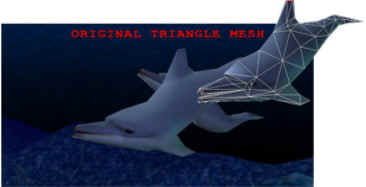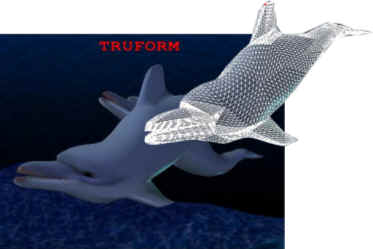The
Charisma Engine II and HyperZ II
is nothing other then ATi's original Charisma
Engine (Hardware T&L engine) beefed up by the Radeon 8500's clock speed and
HyperZ (Memory management) tweaked more for efficiency. ATi however shouldn't be faulted for not
adding anything new to the Charisma Engine since Hardware T&L is dead with
the emergence of Programmable T&L which the R200 also has.
Smart Shader
is ATi's counter to nVidia's nFiniteFX engine found in the GeForce3 series of cards
and with full support for DirectX 8.1. This gives game developers a graphics processor that
can manipulate scenes the way they want
and not be limited on what a graphics card can
do as in Hardware T&L based cards. This should allow future
games to be more vibrant, life like, and realistic then was ever
possible before.
One very interesting option the Radeon 8500 has is
support for Pixel Shader version 1.4. Few games support pixel shaders let
alone version 1.4 and with nVidia not jumping on the bandwagon we're pretty sure
that version 1.4 will never really be used to its full potential. What pixel
shader version 1.4 does is allow the
graphics card to apply six textures onto a pixel rather
then the four a GeForce3 can do. Below is a chart
explaining the difference between the Pixel shaders of DirectX 8.0 and DirectX
8.1
|
|
DirectX
8.0 Pixel Shaders |
SMARTSHADER
Pixel Shaders (DirectX 8.1) |
|
Max.
Texture Inputs |
4 |
6 |
|
Max.
Program Length |
12
instructions (up to 4 texture sampling, 8 color
blending) |
22
instructions (up to 6 texture sampling, 8 texture addressing, 8 color
blending) |
|
Instruction
Set |
13
address operations 8 colour operations |
12
address / colour operations |
|
Texture
Addressing Modes |
40 |
Virtually
unlimited |
As you can see
from the above chart, Pixel Shader version 1.4 supports many more pixel operations than
nVidia's GeForce3 or even GeForce4 Ti. Both nVidia cards only support the older
Pixel Shader 1.3.

Regular Graphics card

Radeon with ATI's
Truform
One of
the greatest features of the Radeon 8500 that no other card has
is Truform . This visual technology
allows the Radeon 8500 to render characters or objects on the screen with a smoother and
rounder appearance. One of the worst complaints of gamers is that objects and people are
too blocky and square to really blow away or frag with 'feeling'. ATi has moved
significantly forward in the quest to solve this problem.
Anyone who
has played Counter Strike with Truform will agree, the game looks a lot nicer.
Games only need to be patched to use Truform, however many developers have already
stated that they plan to release those patches.
SmoothVision
is ATi's name for multi-sampling AA. Working on the a very similar
basis as Quincunx AA, Smoothvision tends to blur the image on the screen
more then with traditional antialaising making the image much easier on the eyes.
For a
more detailed explanation on the technology behind the Radeon
8500 please read our earlier article here. Overclocking and benchmarks are up next so stay
tuned!
